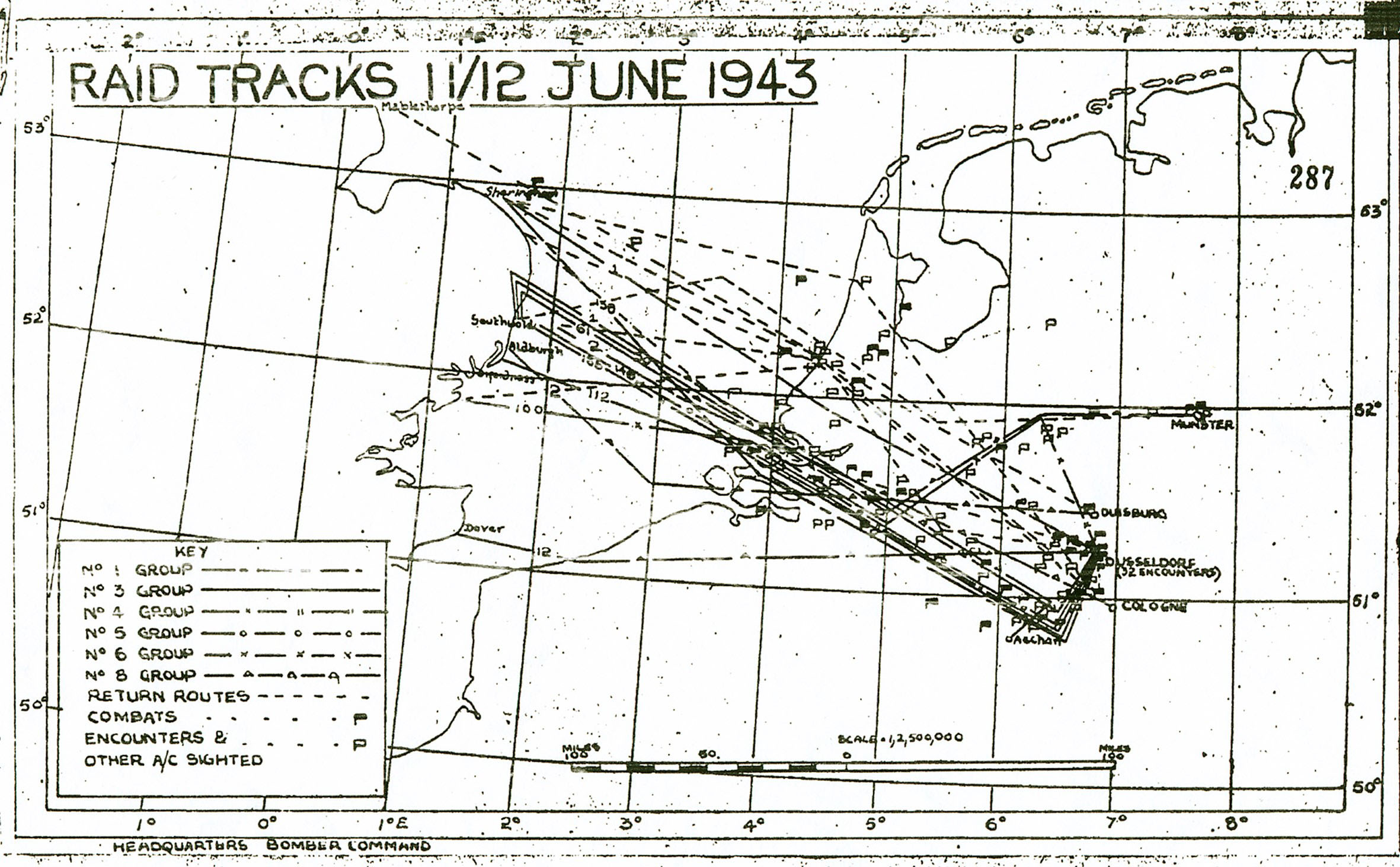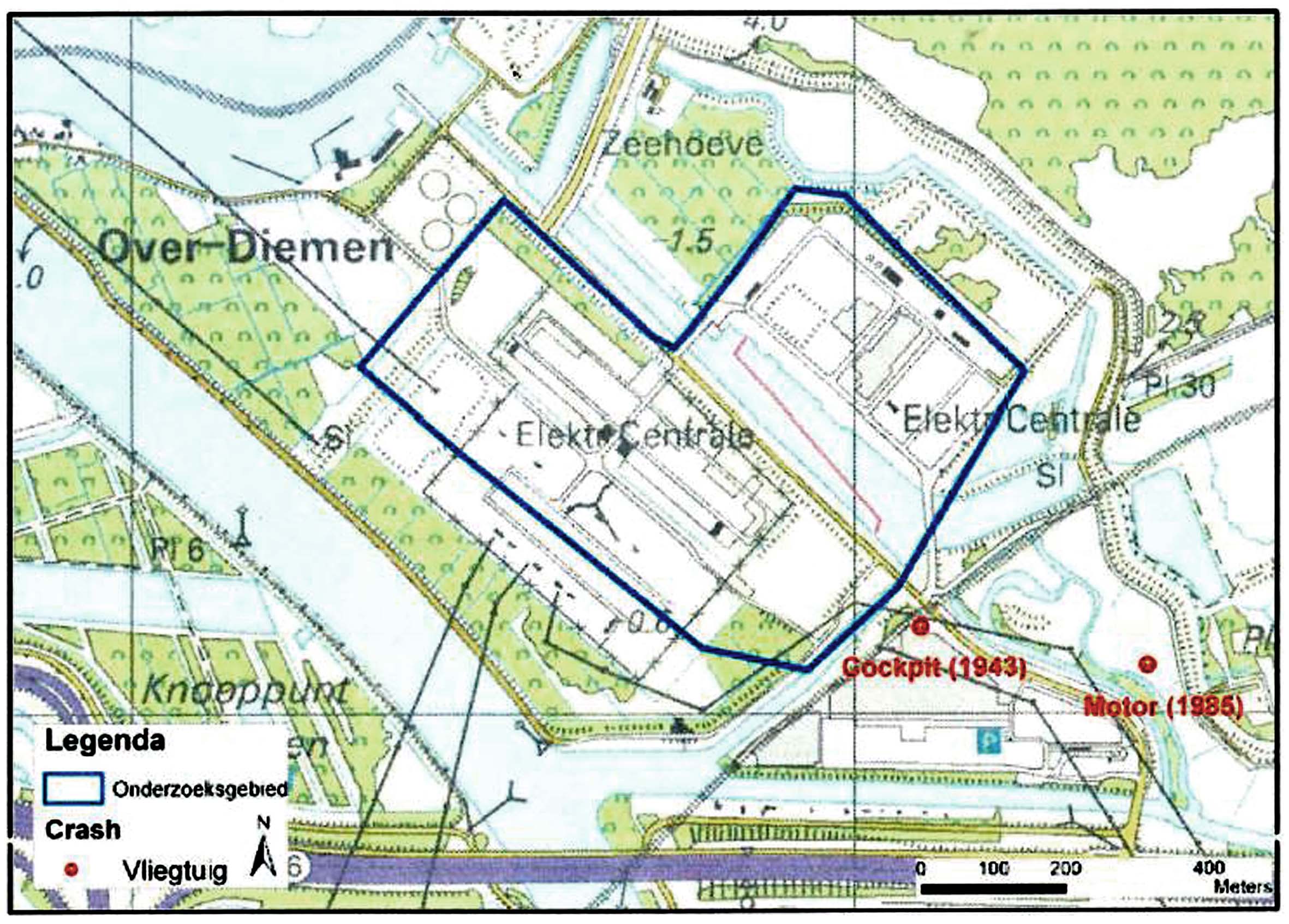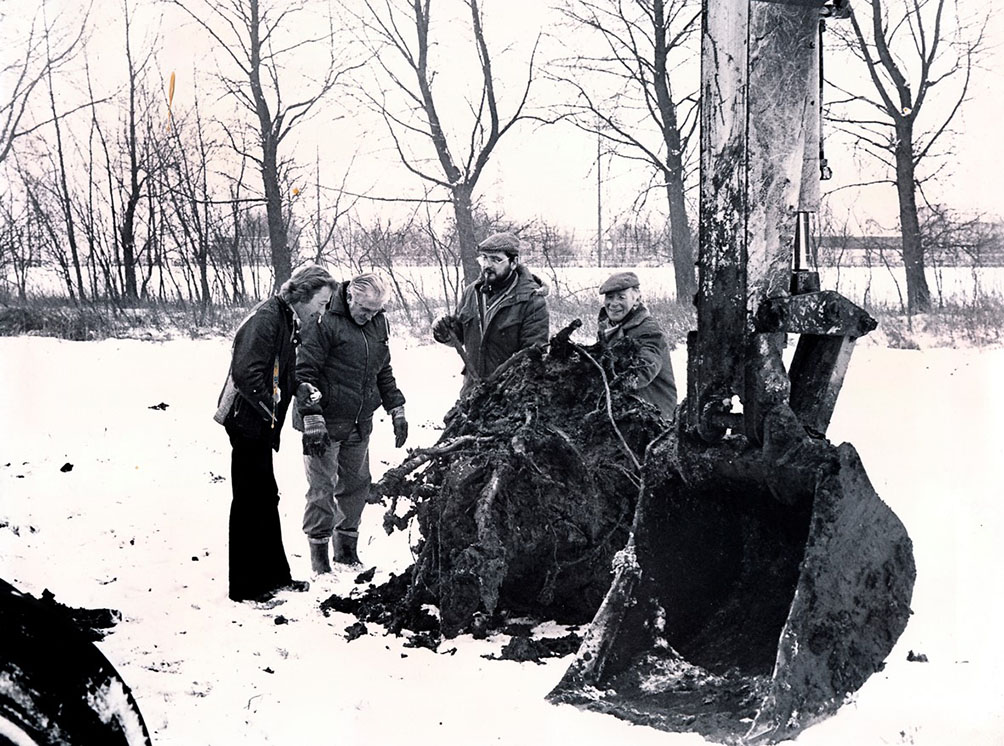
The fatal mission
Wellington HE 154 was part of a group of as many as 783 Allied bombers that bombed the German city of Düsseldorf on the night of 11-12 June 1943. A 5 by 8 km area was completely destroyed, notably part of the city centre, 42 industrial plants, 20 military objects and eight ships. Of the 143 Wellington bombers that took part in this attack, 10 did not return, including the HE 154. The RAAF’s Operations Record Book of 12 June 1943 stated:
Glow of fire on return after passing AMSTERDAM. This plane left at 11.14pm and has been reported missing.

Air Protection Service
In 1936, the Luchtbeschermingsdienst (LBD) was established in the Netherlands to detect possible enemy air attacks and warn Dutch citizens. This government department had observation posts at several strategic locations. In the “LBD Record Book, section ‘World Cup view Amsterdam’ of 12 June 1943, we can read the following interesting remarks:
14:17: WC reports: on 15° + 40° + 45° defence.
14:18: WK reports: plane shot down 15° away.
[“WK” is short for “Wolkenkrabber”, the Dutch translation for “skyscraper”. In fact, it was the tallest building in Amsterdam-Zuid in 1943].
The Wellington HE 154 thus turned out to have been shot down at 15° (east of the Amsterdam skyscraper) and crashed “far away” at 14:18. Which German anti-aircraft gun had shot down the Allied plane was not mentioned.

FLAK
It can be seen from the “Raid Tracks” map of HE 154 that the German air defence systems (FLAK), as far as known to the Allies, were planned to avoid as much as possible. The return flight of the HE 154 went from Düsseldorf via Arnhem to the coast of the IJsselmeer (IJssel lake) before flying over the Chanel via Muiden, Diemen, East Amsterdam and North Holland to Leconfield airbase in Yorkshire. For now, the HE 154 is believed to have been shot down by a mobile German FLAK unit operational near Muiden.
Image credits:
Digging up engine in january 1985
Frits Reurekas, Karel Hennipman, Jaap Hennipman, G. Overmans and Hans Hartsink
(foto: F. Reurekas)

Loss register
The exact location where HE 154 crashed in 1943 has caused some confusion over the years.
The exact location where HE 154 crashed in 1943 has caused some confusion over the years.Most parts of the downed Wellington have been found within the municipality of Diemen. Subsequently, some remains were also recovered in the nearby municipality of Muiden.
The Dutch Ministry of Defence records in the Schaderegister 1939-1945: time of crash 02.16; crash location “Diemen (Overdiemerpolder)”.
At dawn on 12 June, many German soldiers came over to collect the remains of the Wellington for valuable scrap metal. The HE 154’s hard landing caused one of its engines to break off completely and sink into the boggy peat. Due to lack of proper equipment, the Germans failed to dig out the heavy engine. The entire salvage operation of the plane wreckage took about four days.
Image credits:
Engine of THE-154 as stored now at Koninklijke Saan in Diemen
(foto A. Saan)
Reconstruction
When all the facts are put together, a fairly complete picture emerges of the tragic events that took place on the night of 11-12 June 1943. Given the flight plan, HE 154 flew over central Netherlands back to its base in England after depositing its bomb load in Düsseldorf. Given the flight plan, it is very likely that an FLAK battery in or near the town of Muiden was responsible for shooting down the HE 154.
Captain Green and his crew were forced to make an important decision to either leave the badly damaged and burning plane by parachute or make an emergency landing. Consulted aviation experts noted that the three propeller blades of the excavated Bristol Hercules aircraft engine are still in the so-called ‘vane position’. In this position, the propeller blades are parallel to the direction of flight, producing the least drag. This procedure is required when making an emergency landing where both engines have failed. With the Wellington now acting as a glider, precious minutes were gained in finding a suitable location in the dark for an emergency landing. Apparently, the damage was so great that a change of course to the somewhat more northerly IJsselmeer was no longer possible. The crash site turned out to be the green pasture of farmer Hennípman in Overdiemen. The knowledge that the shot-down and uncontrollably burning plane would most likely have crashed on top of residential flats in Diemen and/or Amsterdam-Oost must have motivated the crew to try to make a dangerous but controlled emergency landing. Unfortunately, they had to pay for this heroic act with their lives.
